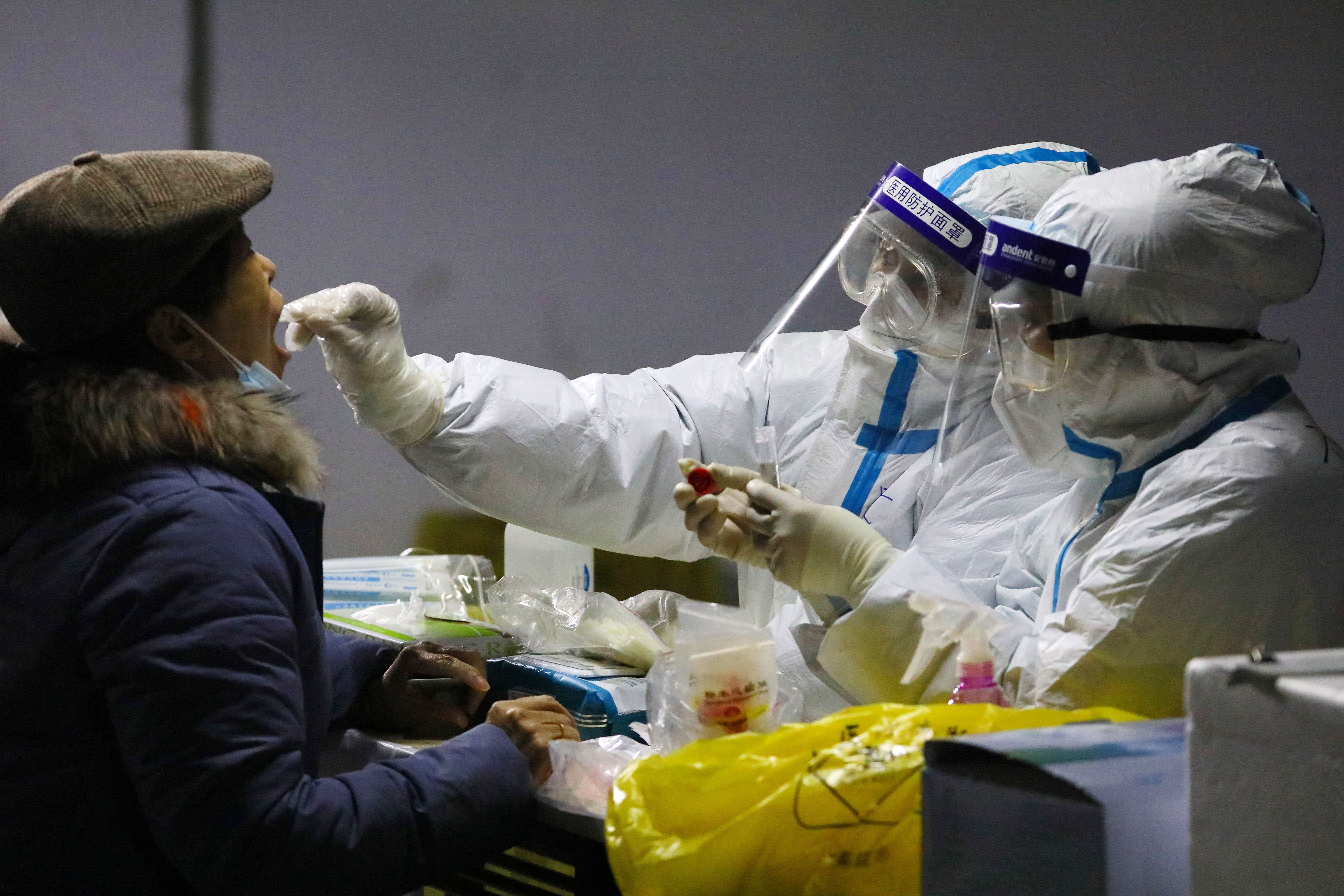
A resident undergoes a Covid-19 coronavirus test in the basement of a residential complex as part of a large-scale testing program in response to new cases of the virus emerging in Shijiazhuang, central China’s Hebei province, on Jan. 12, 2021.
STR | AFP | Getty Images
BEIJING – Local authorities in regions close to Beijing are stepping up restrictions on social activity as new cases of coronavirus increase.
The city of Langfang, located about 1.5 hours south of downtown Beijing, told its nearly 5 million residents on Tuesday to stay at home for the next seven days. The city is located in Hebei, the same province as Shijiazhuang, a city of 11 million inhabitants that closed late last week after a spike in coronavirus cases.
Shijiazhuang reported 39 new confirmed cases for Monday, while Langfang revealed one. That brought the total number of current confirmed and asymptomatic cases in Hebei Province to more than 500 people.
Separately, two regions of China’s northernmost province, Heilongjiang, announced lockdowns on Tuesday. The province reported a new confirmed case and 36 asymptomatic cases on Monday.
Beijing reported a confirmed case on Monday. Since mid-December, the city has reported a handful of cases in a row, leading to tougher restrictions on some apartment complexes and massive testing on the outskirts of the country’s capital.
It was not immediately clear to what extent the local economy would be affected as there was no official order to stop the work. Heilongjiang accounted for just over 1% of China’s GDP in 2019 and Hebei for about 3.6%. Neither provinces is as important economically as those in the southeastern coastal regions of China.
Representatives from European and American business associations in China said members were not significantly affected by the latest increase in virus cases. Economic activity generally slows down in late January through February as hundreds of millions of workers return to their hometowns for the Lunar New Year.
However, some provinces have begun to impose bans on large-scale gatherings and events. The central government is encouraging people to stay in place during the Lunar New Year holiday that officially falls in mid-February this year.
“The worsening coronavirus situation will affect economic activity, and markets may need to dampen expectations for strong pent-up consumption demand in the upcoming LNY holidays in mid-February,” said Ting Lu, chief China economist at Nomura, Monday. in a note. .
“With the deteriorating virus situation and the coldest winter in decades, the growth recovery has slowed down in recent weeks,” he said. “A full recovery in the services sector could be delayed, as suggested by the weaker services PMI indexes in December.”
Both official and private surveys last month showed that the PMI for services, or Purchasing Managers’ Index, remained in the expansion area but fell from November.
China’s economy shrank by 6.8% in the first quarter of last year as authorities closed more than half of the country in an effort to contain the outbreak.
WHO team to initiate research
Covid-19 first appeared in the Chinese city of Wuhan in late 2019. Authorities shut down the city in late January 2020, but the disease quickly spread to the rest of the world in a global pandemic. The coronavirus has since infected more than 90 million people worldwide and killed more than 1.9 million people.
On Thursday, a team from the World Health Organization will arrive in China to investigate the origin of the virus together with local scientists. The WHO said the investigation will begin in Wuhan.
A separate WHO team is working with producers of Covid-19 vaccines from Chinese pharmaceutical companies Sinovac and Sinopharm “to assess compliance with international quality manufacturing practices before WHO develops a potential emergency list,” said Tedros Adhanom Ghebreyesus, director. general of the WHO.
Beijing has backed out against the idea that Covid-19 came from China. After the spread of the virus stalled domestically last March, authorities have blamed subsequent spikes in business on foreign sources.
For the latest outbreak, Hebei Province began reporting cases about 10 days ago. On Sunday, an epidemiologist from the provincial disease control center told reporters that the cases were likely from foreign sources who were in contact with the province before Dec. 15.